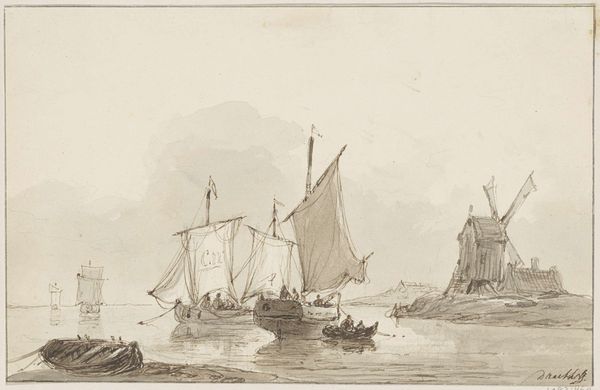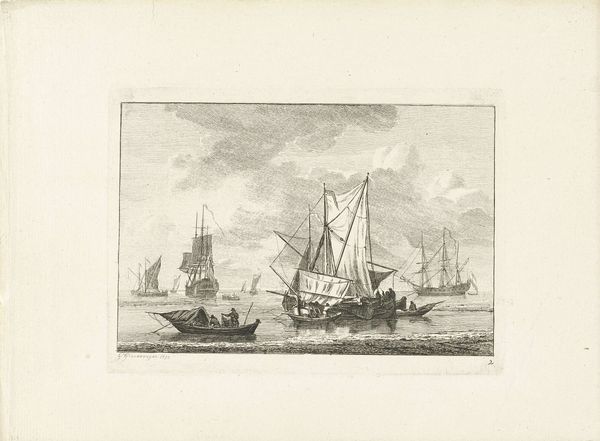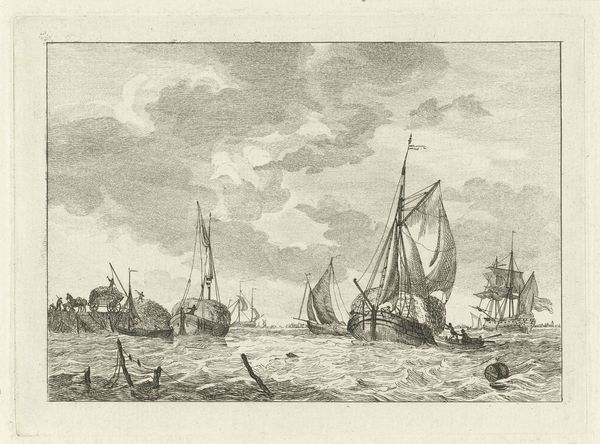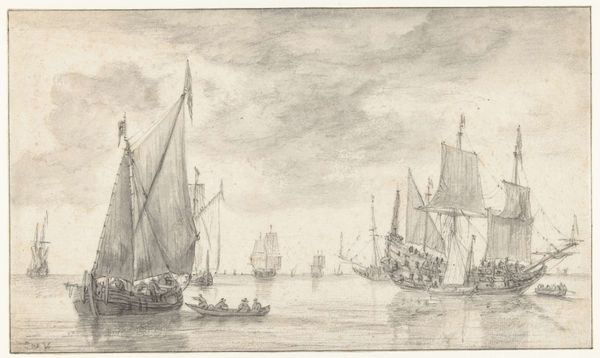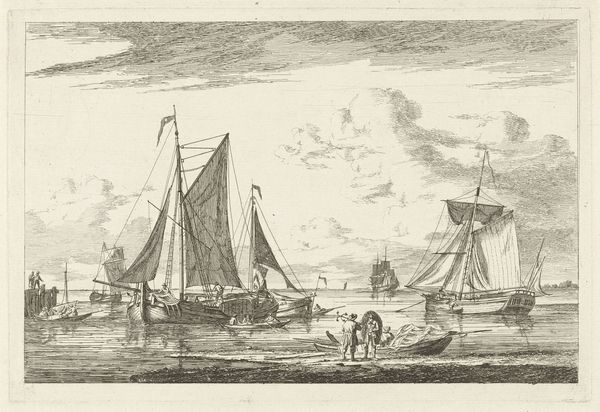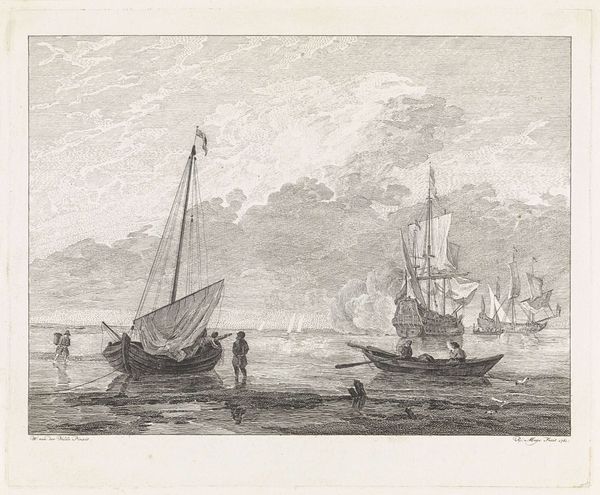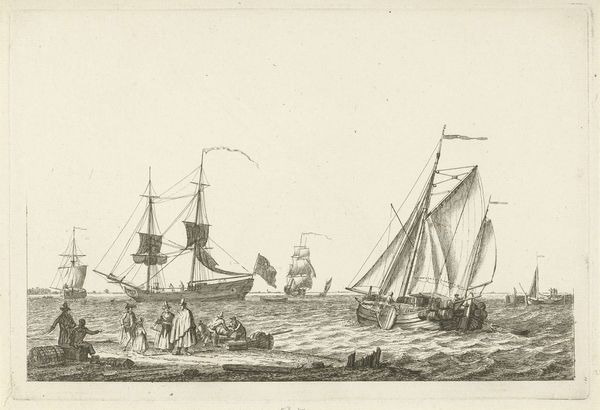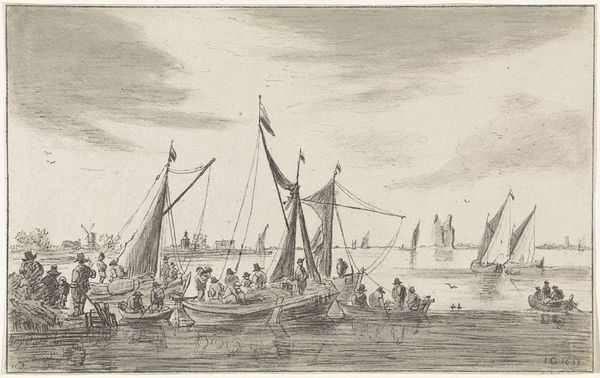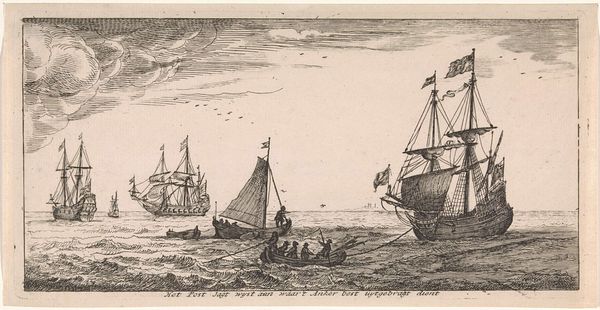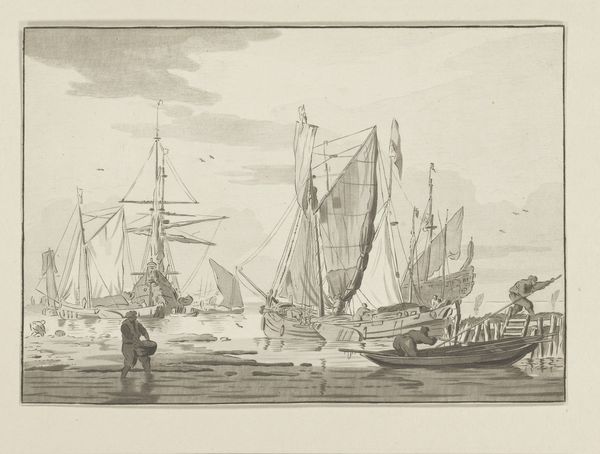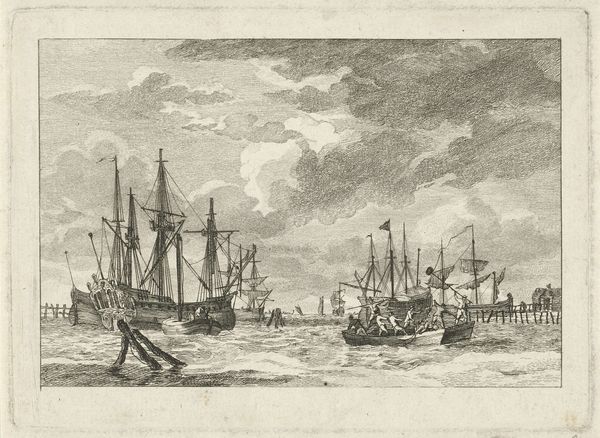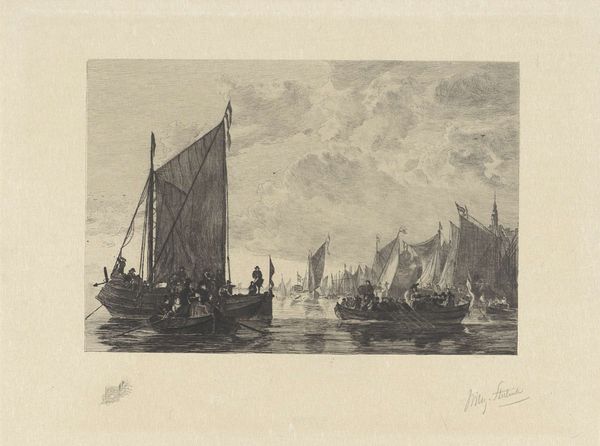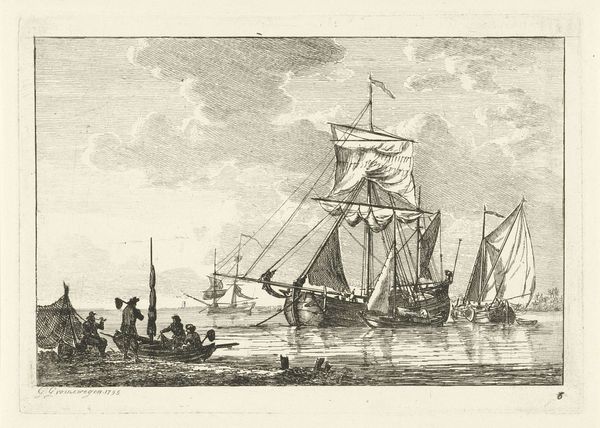
print, etching
#
dutch-golden-age
# print
#
pen sketch
#
etching
#
landscape
#
realism
Dimensions: height 142 mm, width 180 mm
Copyright: Rijks Museum: Open Domain
Curator: Let's consider "Windstilte," an etching crafted by Johannes Arnoldus Boland between 1875 and 1876. It is a beautiful example of realism inspired by the Dutch Golden Age maritime tradition. Editor: Wow, what a still, quiet scene! It's like looking into a grey dream, full of silent ships waiting. Gives me the sense that everyone's holding their breath. Curator: Absolutely, Boland masterfully captured that serene atmosphere. Given the title "Windstilte", we see how his composition, predominantly horizontal with gentle gradations in tone, echoes a tranquil, almost stagnant moment. These maritime scenes were increasingly romanticized as industrialization progressed inland. Editor: Stagnant is the word. You can almost feel the thick, salty air hanging heavy. The detail he manages with simple etching is striking—you almost expect the sails to billow, but they just... don't. Curator: Indeed. These etches were intended for a growing art market amongst the emerging middle class and they desired easily accessible scenes of daily life made palatable by the beauty of Dutch maritime strength and skill. Boland tapped into that yearning perfectly. The medium itself – printmaking – speaks to that desire for accessibility. Editor: It's interesting, isn't it? Taking something so vast and untamable, like the sea, and making it pocket-sized, easily consumed. You know, it almost feels melancholy. Maybe because you expect wind on the water? All these magnificent ships sitting… still. It’s also incredibly skillful how with so little the artist achieves such scale and depth. Curator: That melancholic element fits within the larger narrative of the 19th-century anxieties. The world was changing, landscapes vanishing to be replaced by growing industrial towns. The print becomes a keepsake of a traditional past. It’s really a complex negotiation. Editor: A keepsake... Yes! Almost a longing caught on paper. It certainly made me reflect today. Curator: Well, it illustrates how artists engaged in a dialogue between their reality and this shared imagined space of an idealized maritime legacy. Food for thought, indeed.
Comments
No comments
Be the first to comment and join the conversation on the ultimate creative platform.

